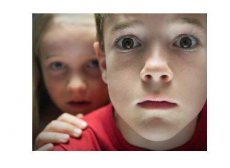Teenagers are more prone to emotions of fear
Last reviewed: 16.10.2021

All iLive content is medically reviewed or fact checked to ensure as much factual accuracy as possible.
We have strict sourcing guidelines and only link to reputable media sites, academic research institutions and, whenever possible, medically peer reviewed studies. Note that the numbers in parentheses ([1], [2], etc.) are clickable links to these studies.
If you feel that any of our content is inaccurate, out-of-date, or otherwise questionable, please select it and press Ctrl + Enter.

A new study by the staff of the Vail-Cornell College of Medicine shows that the reaction of adolescents to fear differs from that of adults. Once frightened, the adolescent brain captures and remembers these emotions and reacts the same way next time, even if there is no reason for fear.

"The results of our work will help to explain this phenomenon, as a surge in anxiety disorders in adolescents," says the author of the study, Professor Francis Lee. "Especially since 75% of adults with anxiety and anxiety attacks are most likely to endure it from childhood."
Experts conducted two types of experiments - neurophysiological and psychological. Participants in the experiments were adults, teenagers and children. All categories of subjects were given headphones and asked to watch the movements on the computer screen, along which geometric shapes swam. When one of the figures appeared, a sharp, unpleasant sound was heard. As a result, fear, when this figure appeared, became reflex. At its sight at people physiological parameters which were fixed by devices varied.
At the next stage of the experiment, the subjects again sat down in front of the computer screen and looked through a series of geometric figures, but unpleasant sounds no longer accompanied the displayed objects.
Adults and children after a while realized that there was nothing to be afraid of, but the reaction of teenagers of 12-17 years did not change: they still expected to hear a sharp sound in the headphones and could not get rid of the feeling of impending fear. As soon as the corresponding figure floated on the screen, the teenagers threw them into sweat.
The same reaction was observed by scientists in experiments with rats, only with the difference that in the literal sense of this word, the rodents could look into the brain.
Scientists have discovered features that distinguished adult animals from very young cubs. These features are found in the prelimbic and infralimbic regions of the prefrontal cortex of animals.
The first zone receives and processes emotions of fear, and the second is responsible for their destruction. It turned out that the cubs and adults had a high level of synaptic plasticity, but the adolescent rats had a low level.
Nerve chains in adolescents concentrated in this zone, rebuilt longer, so fear and "release" them not immediately.
This explains why teenagers are much more prone to neuroses and anxious states than adults.
Scientists hope that their discovery will be useful in developing effective methods and drugs that can alleviate adolescent depressive conditions.

